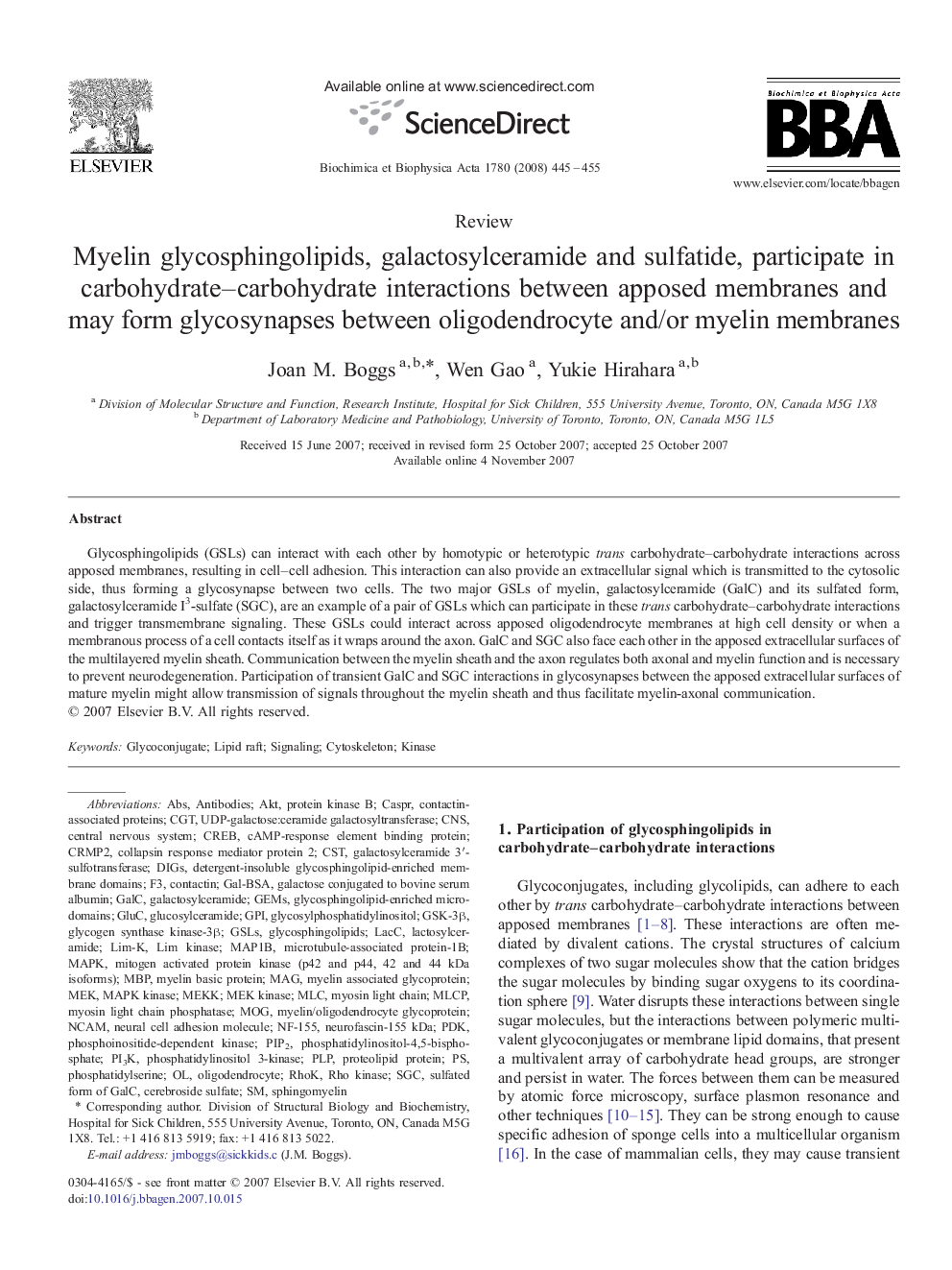| Article ID | Journal | Published Year | Pages | File Type |
|---|---|---|---|---|
| 1948407 | Biochimica et Biophysica Acta (BBA) - General Subjects | 2008 | 11 Pages |
Glycosphingolipids (GSLs) can interact with each other by homotypic or heterotypic trans carbohydrate–carbohydrate interactions across apposed membranes, resulting in cell–cell adhesion. This interaction can also provide an extracellular signal which is transmitted to the cytosolic side, thus forming a glycosynapse between two cells. The two major GSLs of myelin, galactosylceramide (GalC) and its sulfated form, galactosylceramide I3-sulfate (SGC), are an example of a pair of GSLs which can participate in these trans carbohydrate–carbohydrate interactions and trigger transmembrane signaling. These GSLs could interact across apposed oligodendrocyte membranes at high cell density or when a membranous process of a cell contacts itself as it wraps around the axon. GalC and SGC also face each other in the apposed extracellular surfaces of the multilayered myelin sheath. Communication between the myelin sheath and the axon regulates both axonal and myelin function and is necessary to prevent neurodegeneration. Participation of transient GalC and SGC interactions in glycosynapses between the apposed extracellular surfaces of mature myelin might allow transmission of signals throughout the myelin sheath and thus facilitate myelin-axonal communication.
